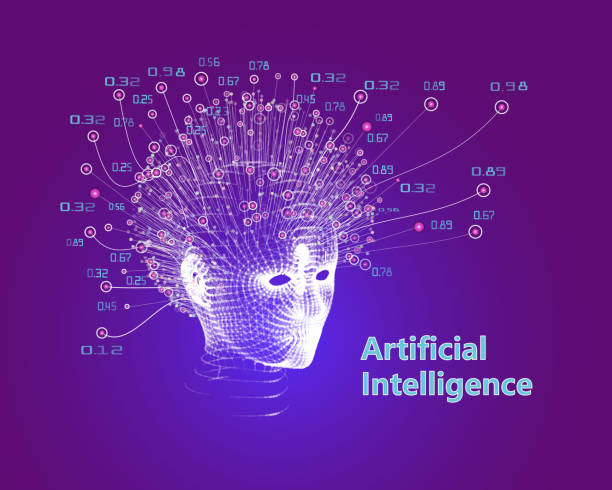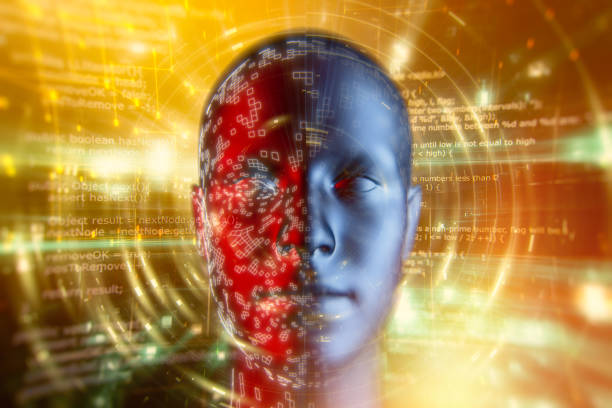Introduction to AI Robots and Their Place in Today’s Life
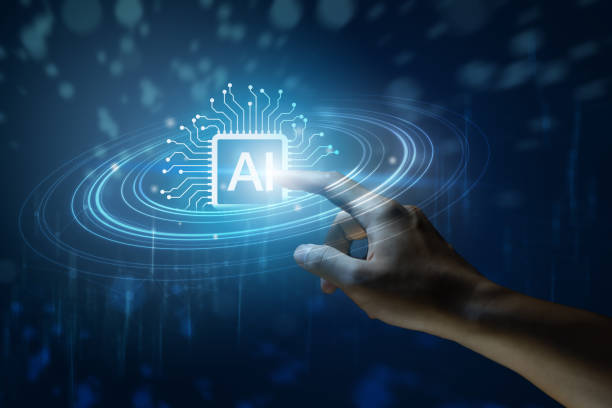
In the current era, the concepts of #robotics and #artificial_intelligence have gained more attention than ever before.
An AI robot, in the true sense of the word, is a machine capable of understanding, reasoning, learning, and problem-solving, just like a living being, but with infinitely greater speed and precision.
These machines can not only perform repetitive and tedious tasks but also, relying on complex algorithms and vast amounts of data, possess the ability to make decisions and adapt to new environments.
From the production lines of enormous factories to virtual assistants in our smartphones, the footprint of this advanced technology can be observed.
Recent advancements in Deep Learning and Neural Networks have enabled AI robots to gain a deeper understanding of natural language, images, and even human emotions.
This technological leap has not only revolutionized the industry and manufacturing sectors but also brought about significant transformations in fields such as medicine, education, and services.
Imagine a robot that can assist doctors in early disease diagnosis, or a smart assistant that personalizes the learning process for students.
The position of AI robots in the #future of humanity is more than just a mere tool; they will be intelligent partners in the evolution of human civilization, possessing endless potential to open new horizons and pave the way for a brighter future.
Are you tired of losing customers due to poor e-commerce website design? With Rasaweb, solve this problem forever!
✅ Increase sales and visitor-to-customer conversion rate
✅ Smooth and engaging user experience for your customers⚡ Get Free Consultation
The Evolution of Artificial Intelligence and Its Impact on Robots
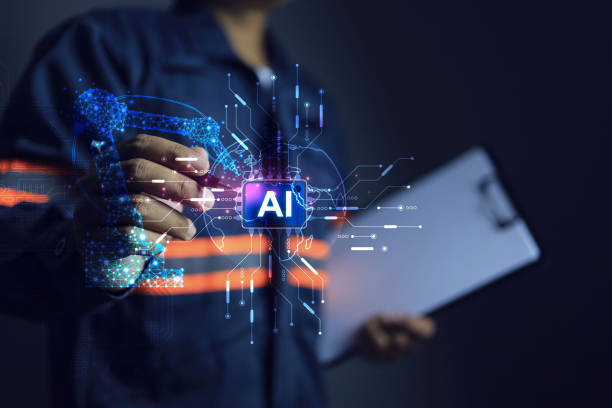
The story of the evolution of Artificial Intelligence dates back to the mid-20th century when scientists first proposed the idea of creating thinking machines.
From the very beginning, there was an unbreakable bond between artificial intelligence and robotics, as the ultimate goal was to build machines that could not only think but also execute that thought in the physical world.
Initially, robotic AI primarily focused on specific, pre-programmed tasks, such as robotic arms on assembly lines performing precise and repetitive movements.
But with the emergence of advancements in Machine Learning in recent decades, these robots became capable of learning from data and improving their performance.
This was a turning point that transformed robots from merely pre-programmed machines into autonomous and adaptable entities.
Subsequent advancements in Deep Learning and Computer Vision significantly enhanced robot capabilities.
Now, a robot can understand its environment, identify objects, and even recognize faces.
These capabilities have enabled robots to be deployed in more complex and dynamic environments such as hospitals, homes, and even outdoor spaces.
From surgical robots operating with millimeter precision to household robots that clean homes, all are the result of this evolution.
These developments show how the convergence of artificial intelligence and robotics shapes the future landscape of technology, allowing us to tackle more complex and significant challenges in daily and industrial life with the help of machines, ultimately improving efficiency and quality of life.
This path continues to advance rapidly, and every day we witness new innovations in this field.
Types of AI Robots and Their Amazing Applications
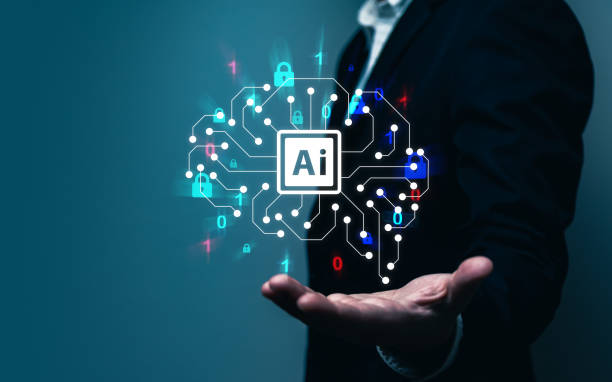
AI robots today encompass a wide range of forms and functions, each designed for a specific application.
This diversity has allowed this technology to penetrate almost all aspects of human life.
Among the most common types are industrial robots, used in factory production lines for assembly, welding, and material handling.
These robots have revolutionized manufacturing industries due to their high precision and ability to work tirelessly.
Another type of these robots are service robots, which operate in human environments such as hospitals, hotels, and homes.
These include surgical robots, cleaning robots, and robots assisting the elderly.
Humanoid Robots, which attempt to mimic human appearance and movement, are used for social interactions, research, and education.
One of the most famous examples is Sophia, capable of conversation and expressing emotions.
Furthermore, autonomous robots like self-driving vehicles and drones, which operate based on artificial intelligence for navigation and decision-making in complex environments, are transforming transportation and logistics.
With advanced capabilities in information processing, learning, and adaptation, these robots have found unparalleled applications in fields such as medicine for more accurate diagnosis, in agriculture for optimizing crop harvesting, and in space exploration for probing distant planets.
Smart robots have pushed the boundaries of what machines can do and are shaping a future where technology serves humanity in unimaginable ways.
| Robot Type | Key Features | Common Applications |
|---|---|---|
| Industrial Robots | High precision, repeatability, high power, continuous operation | Assembly, welding, packaging, material handling |
| Service Robots | Human interaction, navigation in complex environments, service tasks | Medicine (surgery, nursing), cleaning, hospitality, assistance for the elderly |
| Humanoid Robots | Mimicking human appearance and movement, conversational ability | Research and development, education, entertainment, social interaction |
| Autonomous Robots | Independent navigation, environmental understanding, dynamic decision-making | Self-driving vehicles, drones, delivery robots |
Challenges and Ethical Considerations in AI Robot Development
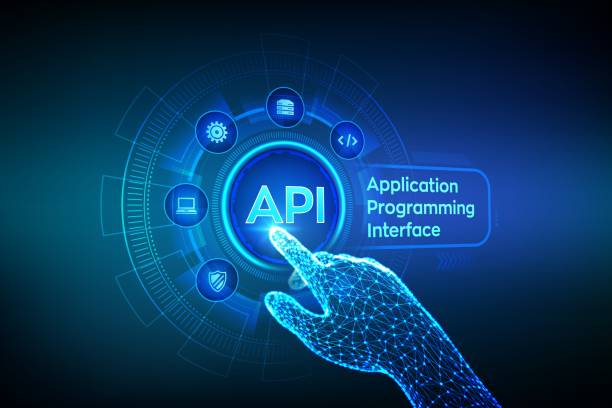
Despite the significant advancements and immense potential of AI robots, their development and expansion come with considerable ethical and social challenges that require deep discussion and consideration.
One of the primary concerns is the issue of job displacement.
With the automation of repetitive and even more complex tasks by robots, concerns have arisen regarding the replacement of human labor and an increase in unemployment in some sectors.
This necessitates a redefinition of the human role in the labor market and investment in retraining and upskilling.
Other ethical considerations include data security and privacy.
AI robots require vast amounts of data for their efficiency, which can raise concerns about how personal information is collected, stored, and used.
Algorithmic Bias is also a serious issue.
If training data contains societal biases, robots can learn and reproduce these biases, leading to discrimination and inequality.
Furthermore, deeper philosophical questions arise: Who is responsible if an AI system makes a mistake? Should robots have rights? How can we ensure that highly autonomous robots always act in humanity’s best interest? Developing comprehensive legal and ethical frameworks, educating the public about these technologies, and fostering global dialogue among experts, policymakers, and the general public are crucial for addressing these challenges.
This discourse helps us to chart a path where AI-powered robots become a tool for human progress and well-being rather than a threat, while preserving human values.
Do you know that a weak corporate website costs you many opportunities daily? With professional corporate website design by Rasaweb, solve this problem forever!
✅ Create a powerful and reliable image for your brand
✅ Attract new customers strategically and increase sales
⚡ [Get Free Website Design Consultation]
How AI Robots Change Our Daily Lives
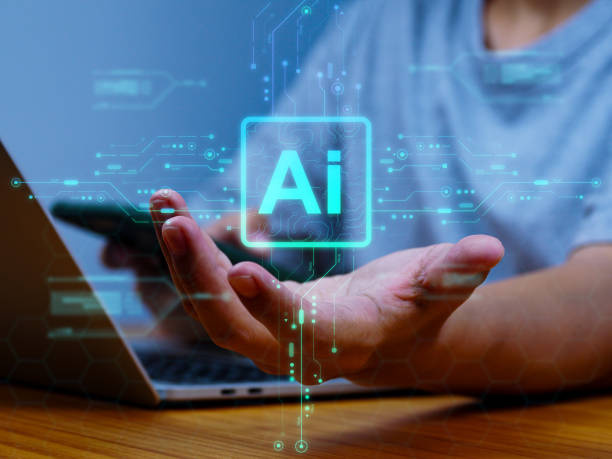
AI robots are no longer a science fiction concept; they have become an integral part of our daily lives and are changing how we live, work, and interact.
At home, smart voice assistants like Siri or Alexa, which are essentially AI robots without physical bodies, help us with daily planning, playing music, and controlling smart devices.
Robotic vacuum cleaners and smart security systems are other examples of this technology in homes that have made life easier and safer.
In the field of healthcare, AI robots play a vital role in high-precision disease diagnosis, new drug development, and even performing complex surgeries with minimal invasiveness.
These robots can help doctors make better decisions and make healthcare services more accessible and efficient for patients.
In the education sector, adaptive learning platforms leveraging AI personalize educational content based on each student’s needs and learning pace, making the learning experience more engaging and effective for them.
Even in the entertainment sector, companion robots and robotic pets are emerging that can offer emotional interactions and help reduce loneliness.
In transportation, self-driving cars guided by AI have the potential to reduce accidents and improve traffic efficiency.
These changes make our lives more efficient, convenient, and even enjoyable.
However, it is crucial to pay attention to the challenges and ethical considerations alongside these advancements to ensure that AI-powered robots are utilized in the best possible way and for the general welfare.
Education in the Age of AI Robots: Preparing for the Future
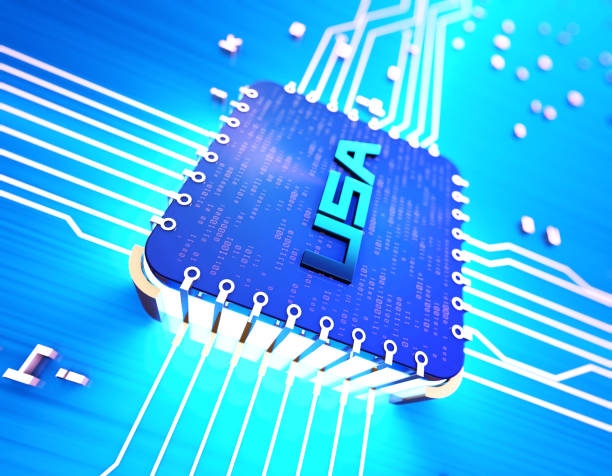
The increasing emergence and expansion of AI robots necessitate a fundamental review of education systems.
Traditional approaches can no longer be used to train the workforce for the future; a future where many current jobs will be automated and new skills will be required.
The main goal in this era is to prepare future generations to live and work alongside intelligent systems.
This means less focus on memorizing information and more on developing skills such as critical thinking, complex problem-solving, creativity, innovation, and emotional intelligence, which machines can hardly imitate.
Schools and universities must update their curricula to include topics such as AI ethics, programming, data analysis, and robotics.
Furthermore, emphasis should be placed on human-robot collaboration skills, so that individuals can effectively interact with these technologies and use them to enhance their productivity.
Continuous and lifelong learning also gains double importance; individuals must be able to rapidly adapt their skills to technological changes and prepare for new jobs that emerge.
In addition to technical skills, the development of soft skills is also vital.
Adaptability, empathy, effective communication, and teamwork are essential for success in a world where AI robots play an increasing role.
Schools can use AI tools to personalize education, helping students identify their strengths and weaknesses and pursue a unique learning path.
With this transformative approach, it can be ensured that future generations are not only familiar with advanced technologies but also use them effectively and responsibly to build a better society.
The Future Outlook of Smart Robots and Expected Advancements
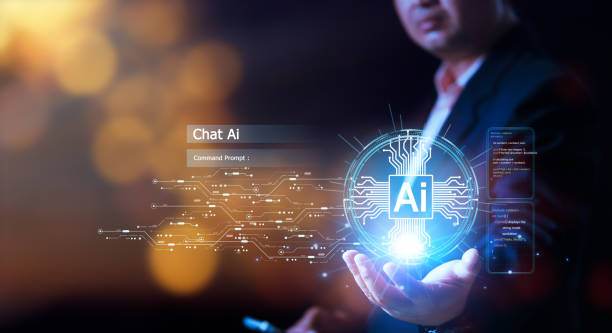
The future of smart robots goes beyond our current imaginations, and significant advancements are expected in this field.
One of the most important developments will be the increase in robots’ own intelligence.
Robots will no longer be merely pre-programmed tools; with reinforcement learning capabilities and the ability to understand their environment more deeply, they will be capable of performing more complex and even creative tasks.
This means robots that can operate in unpredictable environments, interact with humans more naturally, and even independently develop new capabilities.
In the near future, we will see the expansion of collaborative robots (Cobots) that work safely and efficiently alongside humans, especially in manufacturing and service industries.
These robots not only increase productivity but can also help fill labor gaps in specific jobs.
Furthermore, advancements in smart materials and soft robotics will enable the creation of robots that are physically more flexible, adaptable, and even resemble living organisms.
These robots could be used in medicine for more delicate surgeries or in space exploration for accessing more challenging environments.
Additionally, AI robots are expected to play a key role in areas such as personalized education, supporting the elderly and people with disabilities, and even in the development of smart cities.
By collecting and analyzing countless data, these robots can help optimize urban systems, reduce energy consumption, and improve the quality of life for citizens.
The emergence of Microrobots and Nanorobots will also bring new prospects in medicine and industry.
These advancements not only represent technological evolution but also help us effectively address major global challenges, including climate change and diseases.
| Area of Advancement | Description | Potential Applications |
|---|---|---|
| Increased Intelligence and Self-Learning | Ability to learn independently, complex reasoning, and decision-making in dynamic environments | Advanced service robots, space exploration, creative robots |
| Human-Robot Collaboration (Cobots) | Safe and interactive work of robots alongside humans | Manufacturing industries, logistics services, hospitals |
| Soft Robotics and Smart Materials | Creating robots with flexible bodies adaptable to the environment | Delicate surgeries, search and rescue robots, rehabilitation |
| Nanorobotics and Microrobotics | Development of very small robots for precise applications | Drug delivery, cellular surgeries, micro-scale industrial inspections |
A Guide to Selecting and Deploying AI Robots for Businesses

For businesses in the current era, ignoring the potential of AI robots can mean falling behind competitors.
However, selecting and correctly deploying this technology requires a strategic approach and precise planning.
The first step is identifying the business’s real needs.
Which processes are repetitive and time-consuming? Where can automation increase productivity and reduce costs? Is the goal to improve customer experience or optimize the supply chain?
After identifying the needs, the next step is thorough research and examination of the types of AI robots available in the market.
Do you need an industrial robot for a production line or a smart chatbot for customer support? Can Robotic Process Automation (RPA) solve your problems, or do you require a more complex deep learning system? One must be aware of each system’s precise capabilities, scalability, and implementation and maintenance costs.
Investing in employee training is also highly important.
Integrating AI robots does not mean completely replacing human labor, but rather empowering them to work alongside new technologies.
Employees must be trained on how to interact with robots, analyze data, and monitor the performance of AI systems.
Additionally, a framework for continuous evaluation of robot performance and necessary adjustments should be considered.
Attention to security and ethical considerations is also vital.
Data protection and ensuring transparency and fairness in AI decisions must be a priority.
With a step-by-step and strategic approach, businesses can leverage the power of AI robots to achieve sustainable competitive advantage.
Do your e-commerce website visitors leave before purchasing? Don’t worry anymore! With Rasaweb’s professional e-commerce website design services, solve the problem of visitor-to-customer conversion failure forever!
✅ Significant increase in conversion rates and sales
✅ Unparalleled and engaging user experience
⚡ Contact us now for a free consultation!
Success Stories and Lessons Learned from AI Robots
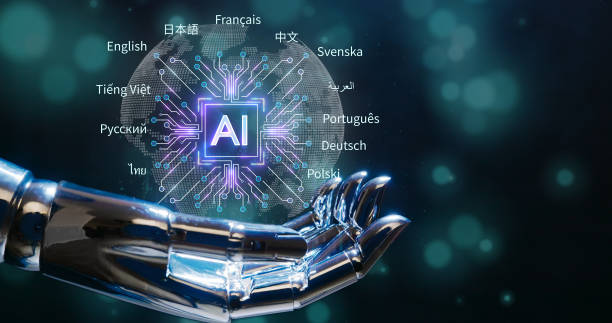
There are countless success stories regarding the deployment of AI robots across various industries and sectors, each offering valuable lessons.
One of the most prominent examples is the use of AI robots in the automotive industry.
Companies like Tesla, by extensively using robots on their production lines, have achieved unprecedented levels of automation and precision, leading to a significant increase in production quality and speed.
This success demonstrates how smart automation can optimize complex processes.
In the healthcare field, the da Vinci surgical robot is a prime example of the impact of medical robotics with AI.
This system allows surgeons to perform complex surgeries with very high precision and minimal invasiveness, leading to faster patient recovery and fewer complications.
The important lesson from this experience is AI’s potential to enhance human capabilities rather than merely replace them.
In the customer service sector, companies like Amazon have managed a massive volume of customer requests and significantly improved the user experience by using chatbots and AI-powered voice assistants.
This case highlights the importance of personalization and service availability through the use of smart chatbots.
From these successes, it can be learned that the implementation of AI robots should be purposeful and consider long-term benefits for the business and customers.
Furthermore, paying attention to potential resistance to change and the need for training and cultural acceptance within organizations is crucial for achieving sustainable success.
These stories are inspiring and pave the way for more innovations in the future.
Frequently Asked Questions About AI Robots and Common Misconceptions
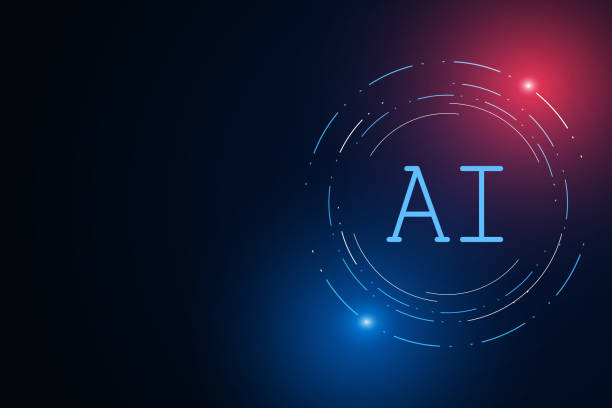
With the expansion of AI robots, many questions and ambiguities have arisen in the minds of the general public and even experts.
Here, we answer some of the most frequently asked questions to provide a better understanding of this complex technology.
Are AI robots conscious or do they have feelings?
No, currently AI robots and advanced AI systems lack self-awareness, consciousness, and emotions in the human sense.
They operate based on algorithms and data, and any expression of “feelings” or “intelligence” from them is merely a simulation achieved through programming and learning from data.
There is still a long way to go until Artificial General Intelligence (AGI), which can be conscious like humans, is achieved.
Will robots replace all human jobs?
It is unlikely that robots will replace all jobs.
While AI robots can automate repetitive, dangerous, and even some cognitive tasks, jobs requiring creativity, critical thinking, emotional intelligence, complex human interactions, and soft skills will still require human labor.
In many cases, robots and AI act as tools to increase human productivity and empowerment, rather than completely replacing them.
This trend is more towards creating new jobs and changing the nature of existing ones.
How can we ensure the safety and ethical nature of AI robots?
This is a major challenge and requires international cooperation among governments, industry, and academia.
Developing regulatory frameworks and ethical standards, transparency in the design and operation of AI systems, and investing in AI ethics research are among the key steps.
Additionally, there is a need for thorough testing and validation to prevent bias and ensure safe operation.
The goal is to build robots that are not only efficient but also operate responsibly and in the interest of humanity.
Frequently Asked Questions
| Question | Answer |
|---|---|
| What is an AI robot? | It is a robot that uses artificial intelligence capabilities to understand the environment, reason, learn, and make decisions to perform complex tasks autonomously. |
| What is the main difference between a regular robot and an AI robot? | AI robots can learn and adapt to their environment, while regular robots typically operate based on fixed, predetermined programming. |
| In what fields are AI robots used? | In fields such as industry (production lines), medicine (robotic surgeries), services (customer support, smart vacuum cleaners), exploration (space and underwater), and entertainment. |
| How do AI robots learn? | They acquire new skills through Machine Learning and Deep Learning algorithms, by analyzing large data and identifying patterns. |
| Can AI robots have feelings? | Currently, no. They can detect or simulate emotions, but they do not experience real emotions like humans. |
| What are the main advantages of using AI robots? | Increased productivity, reduced human error, performance of dangerous or repetitive tasks, and provision of new and efficient services. |
| What challenges exist in the development of AI robots? | Need for abundant and high-quality data, complexity of algorithms, ethical issues, cybersecurity, and high research and development costs. |
| Are AI robots dangerous to humans? | With adherence to safe design principles and ethical regulations, no. Concerns are mostly related to social and economic impacts such as changes in the labor market. |
| What is an example of an AI robot in daily life? | Smart robotic vacuum cleaners (like Roomba) that automatically map and clean homes, or smart voice assistants (like Siri and Alexa). |
| How is the future of AI robots predicted? | They are expected to become smarter, more autonomous, and capable of more complex interactions with humans, playing a more prominent role in industry, medicine, transportation, and daily life. |
And other services of Rasaweb Advertising Agency in the field of advertising
Smart Sales Automation: A dedicated service for growth in increasing website traffic based on attractive UI design.
Smart Marketing Automation: Professional optimization for increased sales using custom programming.
Smart Social Media: Revolutionize online growth with user experience customization.
Smart Marketplace: A professional solution for campaign management focusing on precise audience targeting.
Smart Link Building: An effective tool for increasing sales by optimizing key pages.
And over hundreds of other services in internet advertising, advertising consultation, and organizational solutions
Internet Advertising | Advertising Strategy | Advertorials
References
Deep Dive into AI and Robotics
Digiato Articles: AI Robots
Review of Smart Robot Technology – Fars News
Analysis of the World of AI Robotics – ISNA
? Ready to revolutionize your business in the digital world? Rasaweb Afarin Digital Marketing Agency, with expertise in various fields including professional website design, SEO, and social media management, paves your path to growth and success.
📍 Tehran, Mirdamad Street, next to Bank Markazi, Kazeroun Jonoubi Alley, Ramin Alley, No. 6

